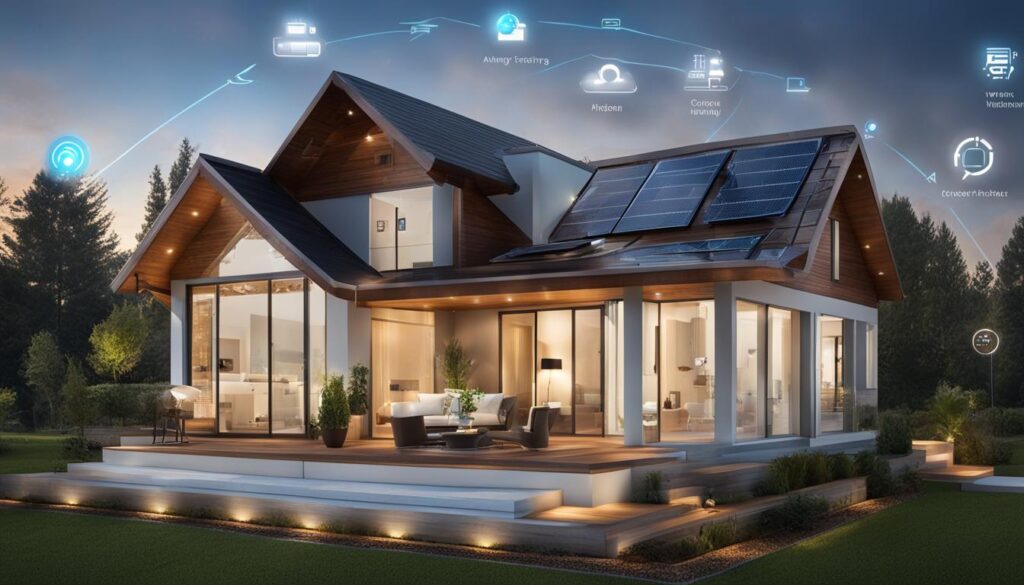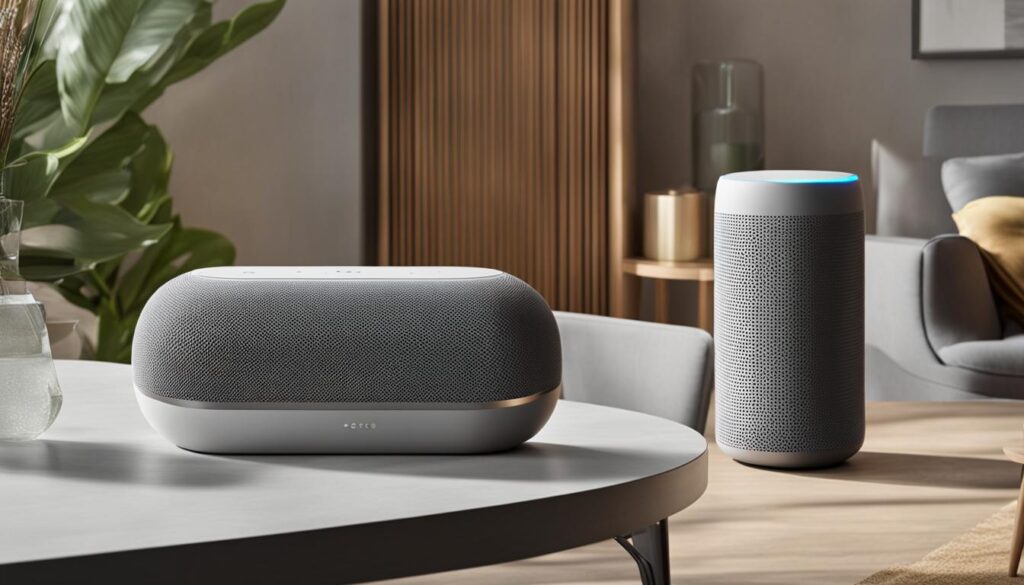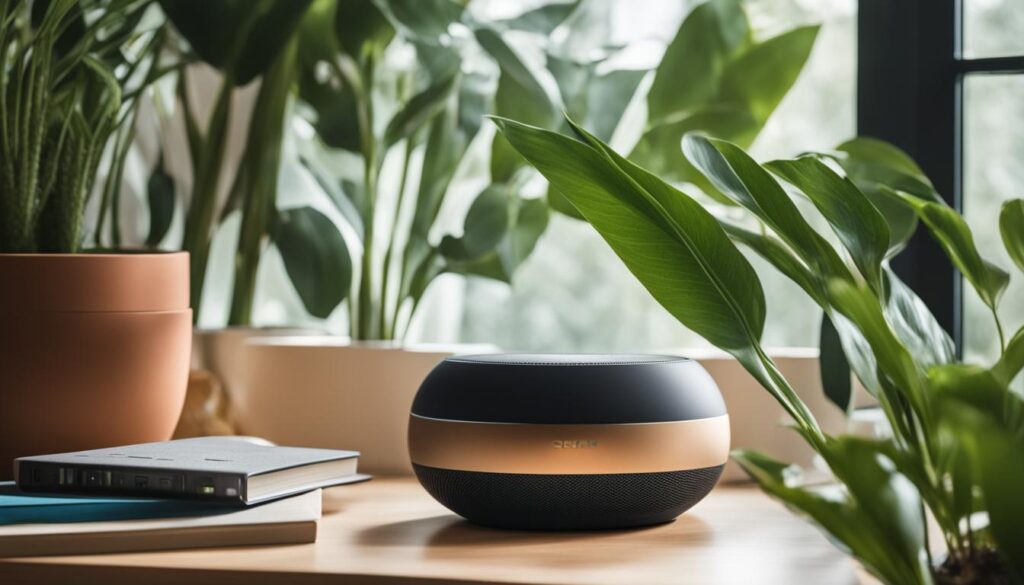Table of Contents
Welcome to my comprehensive guide on everything you need to know about smart lights. Whether you’re looking to upgrade your home lighting system or want to explore the benefits of home automation lighting, I’m here to guide you through the process.
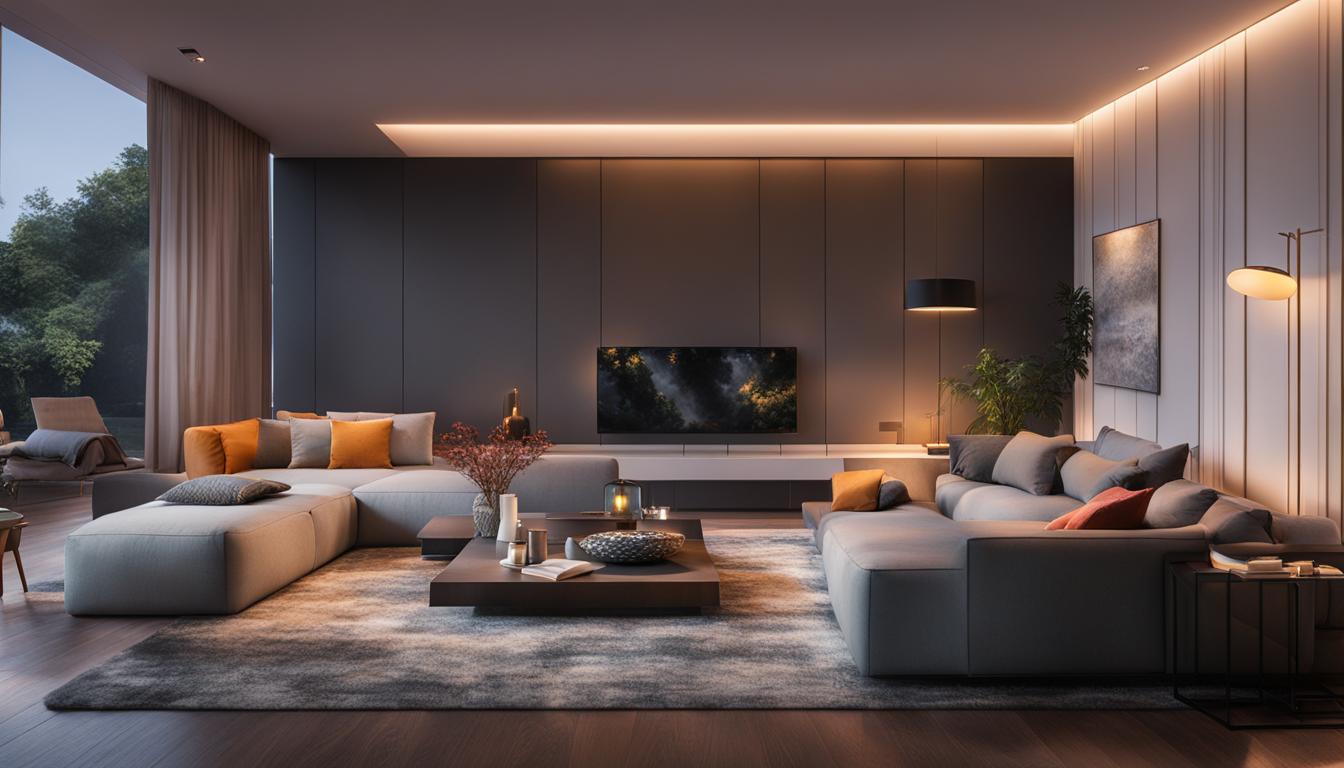
In this guide, I’ll cover everything from choosing the right smart lights for your home to the step-by-step process of smart light installation. With proper planning and execution, you’ll be able to enjoy the convenience, energy efficiency, and versatility of smart lighting systems.
Key Takeaways:
- Smart lights offer a wide range of benefits, including convenience, energy savings, and customization options.
- Choosing the right smart lights for your home depends on factors such as compatibility with your existing home automation system, wireless vs. wired options, and the level of control and automation you desire.
- Proper planning is key to a successful smart light installation, including assessing your home’s lighting needs, calculating energy savings, and planning the layout for optimal coverage.
- Smart light installation requires a few basic tools and a step-by-step process to ensure a smooth and hassle-free experience.
- Maintaining and troubleshooting your smart lighting system can help optimize energy savings and minimize connection issues.
Understanding Smart Lights: What You Need to Know
As we all strive to make our homes smarter and more efficient, smart lighting is becoming an increasingly important component of any modern household. Simply put, smart lights are lighting systems that can be controlled remotely from a smartphone, tablet, or smart home device. But there’s more to them than just remote control.
Intelligent lighting systems have the ability to learn your habits, such as when you go to bed and wake up, and automatically adjust the lighting accordingly. This can help save energy and create a more comfortable living environment. Connected lighting takes things a step further by allowing for more customization and integration with other smart home devices.
By utilizing smart home lighting, you can create a more personalized and efficient lighting experience in your home. Whether you’re looking to create a cozy atmosphere for movie night or want to ensure the lights are turned off when you leave the house, smart lighting puts the power at your fingertips.

Benefits of Smart Home Lighting
There are numerous benefits to incorporating smart lighting into your home.
- Energy efficiency: With the ability to turn lights on and off remotely, you can ensure that lights are only turned on when they are needed, potentially leading to significant energy savings.
- Convenience: No more getting up to turn off lights or fumbling for a light switch in the dark. With smart lighting, you can control your lights from anywhere with just a few taps on your smartphone.
- Security: Smart lighting can be integrated with other smart home security devices to create a more robust and comprehensive security system.
- Customization: With smart lighting, you have the ability to create custom lighting scenes for every occasion, from movie night to dinner parties.
The Future of Smart Lighting
The world of smart home lighting is constantly evolving, with new technologies and innovations being introduced all the time. From voice-activated controls to intelligent lighting that learns your routines and preferences, the possibilities are endless.
As we continue to move toward a more connected and automated world, smart lighting is sure to remain an important element of any smart home. By understanding what smart lighting is and the benefits it provides, you can make an informed decision about whether it’s right for your home.
Choosing the Right Smart Lights for Your Home
Choosing the right smart lights for your home can seem overwhelming, given the myriad options available on the market. However, with a little bit of research and careful consideration, you can pick the perfect smart lighting solution that meets your specific requirements.
The first thing to consider is your existing home automation system. You should choose a smart lighting system that is compatible with the technology you already have in place. This will make the installation process more straightforward and ensure your systems work together seamlessly.
Another factor to consider is whether you want wired or wireless lighting solutions. Wireless lighting is becoming increasingly popular due to its ease of installation and flexibility in terms of placement. With a wireless system, you won’t have to worry about running wires through your walls, which can be a time-consuming and costly process.
| Wireless Lighting Pros | Wired Lighting Pros |
|---|---|
| Easy to install | More reliable connection than wireless |
| Flexible in terms of placement | No need for batteries or charging |
| Can be controlled with a smartphone app | Can handle larger loads than wireless |
As shown in the table above, wireless lighting is versatile and convenient. However, wired lighting solutions can offer more reliable connections and handle larger loads than wireless systems. Consider your specific needs and preferences to determine which type of lighting is right for your home.
Ultimately, the right smart lighting solution for your home will depend on a variety of factors, including compatibility with your existing home automation system, budget, and personal preferences. Take the time to learn about the different options available so that you can make an informed decision and enjoy all the benefits of a smart home lighting system.
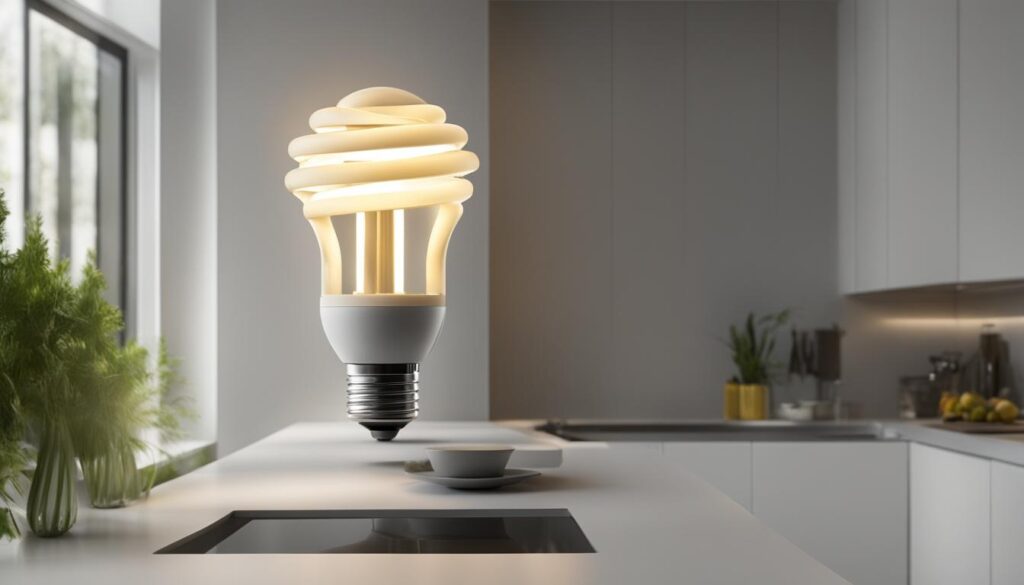
By taking these factors into consideration, you’ll be able to plan the installation process for your smart lights and enjoy the benefits of an energy-efficient lighting system that enhances your home and improves your quality of life.
Step-by-Step Smart Light Installation Guide
Now that you’ve chosen the perfect smart lights for your home and planned the installation process, it’s time to get started with the step-by-step guide. Follow these simple instructions to get your smart lights up and running:
- Turn off the power supply to the light fixture you’ll be replacing with the smart bulb.
- Remove the old bulb and replace it with the new smart bulb. You can either screw it in like a regular bulb or follow the manufacturer’s instructions for a specific bulb type.
- Turn on the power supply and wait for the smart bulb to cycle through its colors or turn on and off a couple of times.
- Download the corresponding smart lighting app on your mobile device and follow the setup instructions to connect the bulb to your home network.
- You’re now ready to customize your smart light settings and create schedules or scenes that fit your lifestyle.
It’s that simple! Remember, if you’re installing smart switches or dimmers, it’s best to hire a licensed electrician to avoid any safety issues and ensure proper wiring.
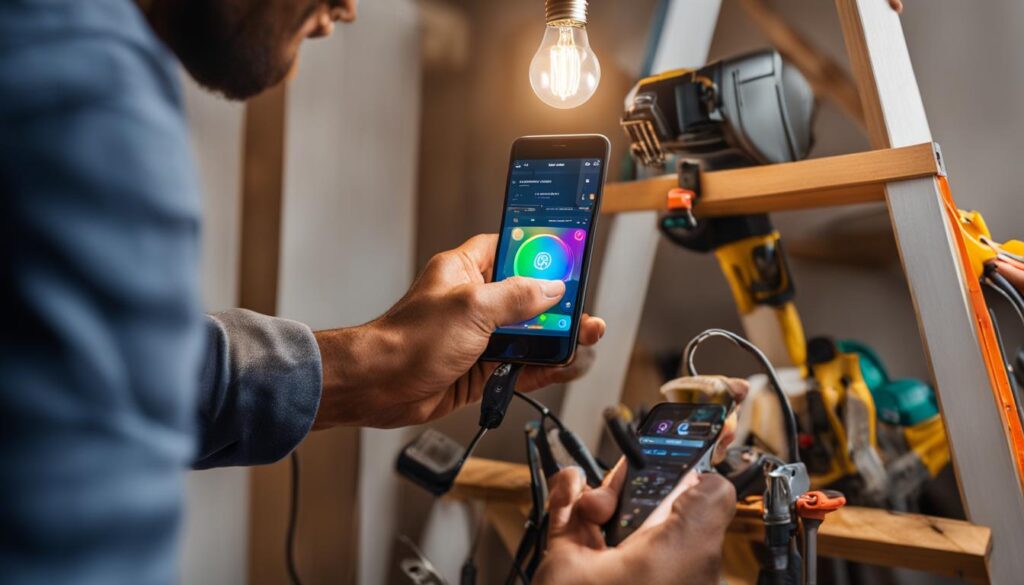
Common Installation Issues and Solutions
While installing your smart lights, you may encounter some common issues. Here are solutions to troubleshoot them:
- Connection Issues – If the smart bulb isn’t connecting to your home network, try resetting the bulb and your Wi-Fi router, move the bulb closer to the router, or use a Wi-Fi extender to improve the signal.
- Compatibility Issues – Before purchasing smart lights, always check if they’re compatible with your existing home automation system to avoid any issues. If you’re unsure, contact the manufacturer for assistance.
- Energy Efficiency – If you’re not seeing the expected energy savings, try reducing the brightness level or creating custom schedules to optimize usage. Also, ensure that the smart light is properly installed and functioning correctly.
By following these tips and best practices, you’ll be able to install and maintain your smart lighting system with ease, creating a more comfortable and energy-efficient home.
Troubleshooting Tips and Best Practices
Now that you have successfully installed your smart lights, it’s important to keep them running smoothly for maximum efficiency and convenience. Here are some troubleshooting tips and best practices to help you do just that.
Check Your Connections
If you’re experiencing connection issues with your smart lights, the first thing to check is your Wi-Fi network. Make sure that your smart lights are within range of your Wi-Fi router and that your router is working properly. You can also try resetting your smart lights and reconnecting them to your network.
Keep Your Firmware Updated
Like any piece of technology, smart lights require regular updates to ensure they are working at their best. Check for firmware updates from the manufacturer and make sure to install them as they become available.
Maximize Energy Savings
One of the main benefits of smart lights is their energy efficiency. To ensure you’re getting the most out of your smart lights, consider setting up schedules and automation features to turn them off when not in use. You can also adjust the brightness levels to use less energy when appropriate.
Use Compatible Devices
When adding new smart devices to your home network, make sure they are compatible with your existing smart lights and home automation system. Using incompatible devices can cause issues with your smart lights and hinder their performance.
By following these troubleshooting tips and best practices, you can keep your smart lights running smoothly and enjoy all the benefits they have to offer. Happy smart light installation!
FAQ
Are smart lights compatible with all home automation systems?
Smart lights are designed to be compatible with most home automation systems. However, it’s always recommended to check the compatibility requirements before making a purchase.
Can I control smart lights with my smartphone?
Absolutely! Smart lights can be controlled using dedicated smartphone apps, allowing you to adjust the brightness, color, and schedule of your lights with ease.
Do smart lights help save energy?
Yes, smart lights are energy-efficient options compared to traditional lighting. With features like motion sensors and scheduling capabilities, you can optimize energy usage and reduce electricity costs.
How difficult is it to install smart lights?
Installing smart lights is generally a straightforward process. Most smart lights can be easily installed by replacing your existing bulbs or fixtures. However, it’s recommended to follow the manufacturer’s instructions for a seamless installation.
Can I integrate smart lights with voice assistants like Alexa or Google Assistant?
Yes, many smart lights are compatible with popular voice assistants like Alexa and Google Assistant. This allows you to control your lights using voice commands, adding an extra level of convenience to your smart home setup.
Can I set up different lighting scenes with smart lights?
Absolutely! Smart lights often offer the ability to create and customize various lighting scenes to suit different moods and activities. Whether you want a cozy ambiance for movie nights or bright lights for work, the options are endless.

